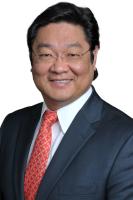DIEP Flap Breast Reconstruction
Overview
 Deep inferior epigastric perforator (DIEP) flap breast reconstruction (reconstructive microsurgery) uses skin, fat, and blood vessels from the abdomen to create a new breast mound on the chest after mastectomy. This is an advanced technique that few surgeons in the northeastern U.S. offer. At Summit Health, we have performed hundreds of these procedures with great results for our patients.
Deep inferior epigastric perforator (DIEP) flap breast reconstruction (reconstructive microsurgery) uses skin, fat, and blood vessels from the abdomen to create a new breast mound on the chest after mastectomy. This is an advanced technique that few surgeons in the northeastern U.S. offer. At Summit Health, we have performed hundreds of these procedures with great results for our patients.
Breast reconstruction after mastectomy is highly customized based on your anatomy, medical condition after mastectomy/cancer treatment, your body type, how much surgery you wish to undergo, and your aesthetic goals. An added benefit of DIEP flap breast surgery is that a tummy tuck is performed in order at the time of the breast reconstruction. This means that your abdomen will be trimmer and flatter after the surgery has been completed.
In most cases, we can perform DIEP when you are under anesthesia for mastectomy. If necessary, you can have DIEP reconstruction after you have healed from mastectomy and after you have had chemotherapy and/or radiation treatment.
Although reconstructed breasts look different from natural breasts, most patients are very pleased with the results of the DIEP procedure. Most insurance carriers cover DIEP flap breast reconstruction surgery.
“In 2009, I had Breast Cancer and had a Double mastectomy with reconstruction. I had an Implant on one side, and on my radiated side, I had a Latissimus Flap with small implant. There was always a difference in size and feel to the breast. I later developed contracture, and the implant shifted. I knew I did not want another implant, as I always felt that I was wearing an iron bra. I researched and found out about the DIEP Flap where they take your stomach fat and make a breast out of it…. I wanted to have a normal feeling breast and to be able to wear clothes again without worrying about hiding my misplaced, uncomfortable breast. The surgery took 10 hours, and I was in ICU for 2 days to make sure that the blood flow was going to the tissue. Dr. Schmid and his team checked on me, and after 4 days, I was discharged…. Though it is only 6 weeks after surgery, and I am still recovering, I now feel put back together for the first time in 6 years. My breasts look and feel like real breasts. I can now wear clothes without having to camouflage myself, plus I have the added benefit of a flatter tummy. Dr. Schmid did a great job! Dr. Schmid is a friendly man that seems to listen to your concerns. He told me what I could expect from my results, and also what he could not promise me. He answered all my questions and put my husband and I at ease from the first appointment. I recommend him to anyone considering a DIEP Flap reconstruction.”
Ready to get started?
Your DIEP Flap Breast Reconstruction Consultation at Summit Health
A consultation for breast reconstruction usually includes all of the physicians treating your breast cancer, including your primary care physician, surgeon, and oncologist. Whether or not you are planning to have breast reconstruction at the time of your mastectomy, you should consult with us first. We will take pictures of and measure your breasts to help guide the reconstruction procedure. In addition, we will partner with your oncologist to ensure that you have as much breast skin possible after mastectomy to reconstruct your breasts. We can also discuss a plan to help prevent unnecessary scarring.
When you meet with us for your breast reconstruction consultation, we will have an honest discussion about your desires, expectations, and concerns, as well as the limits and risks of the surgery. We will review your medical history and recommend options that can best help you achieve your goals. We will give you thorough written instructions to prepare for your surgery and will answer any questions you have. At Summit Health, the patient experience is of primary importance to us.
DIEP Flap Breast Reconstruction Procedure
Recovering from DIEP Flap Breast Reconstruction
Typically, DIEP flap breast reconstruction patients are hospitalized for 3 to 4 days. In most cases, we will remove your surgical drains about 2 weeks after surgery. You will not be able to drive or lift anything over 5 pounds for 4 to 6 weeks after your DIEP procedure.
Expect some soreness, bruising, and swelling after your surgery. Swelling will be the last symptom to resolve and may take several weeks before the swelling in the breast and abdomen subsides. We will provide you with antibiotics and pain medication to help reduce discomfort, and you will see us for several post-surgical follow-up examinations so that we can ensure that you are healing properly.
Scarring is inevitable after DIEP flap breast reconstruction – in both the breast and abdominal areas – but we do everything we can to reduce it. Although scars usually fade over time, they will always be somewhat visible.








